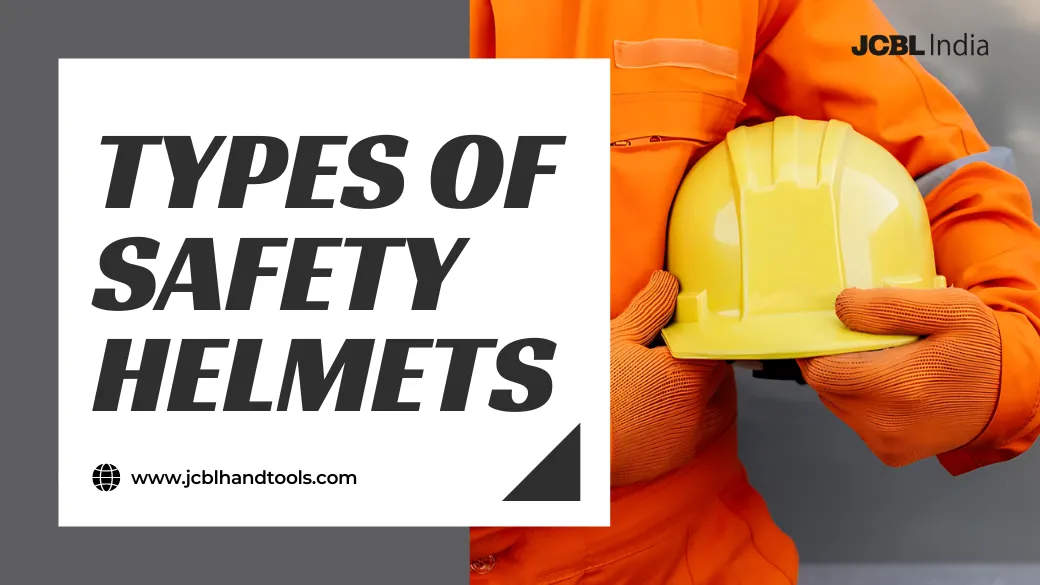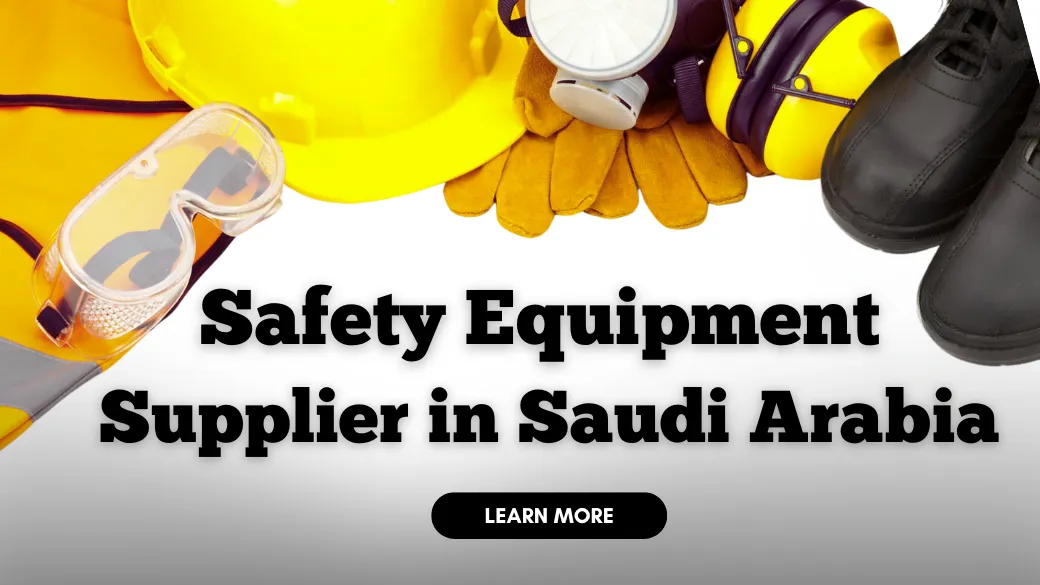How Many Types Of Safety Helmets Are There?

From riding a bike to working at the construction site. Safety is crucial to avoid injuries. Your safety begins with the safety equipment and a helmet is one of the basic equipment that you need. Helmets are hard protective hats that might not seem very special to you but can save your life. These are specially designed to protect you from head injuries. The head is a critical part of the human body and thus requires protection against injuries. Do you know? even a small injury in the head can severely damage the brain thus leading to death. They complement the skull to safeguard the human brain from critical injuries. As you might have seen individuals wear different types of safety helmets for different tasks. Let’s learn about the different types of safety helmets in detail, so that you can find the right one for you.
Types of safety helmets
Wearing the right safety helmet is important as they are designed differently based on the environment you are wearing them in. The helmets vary from one another based on their material, design, comfort, and quality. They also vary based on the features integrated into them. Mainly, the safety helmets are divided into three classes based on their level of protection including Class A, Class B, and Class C.
- Class A: Provides limited electrical protection (2,200 volts) and impact protection.
- Class B: Offers high levels of protection against impact and electricity (20,000 volts).
- Class C: More comfortable but no electrical protection.
Are you wearing the right safety helmet? Let’s find out by understanding the types of safety helmets.
Bump caps
Bump caps are lightweight safety caps. Individuals who work in low-hazard-risk environments wear these safety helmets. In general, warehouse workers, maintenance workers, mechanics, exterminators, and truck drivers wear them. Further, they can protect the head from minor bumps and injuries. They have many advantages and disadvantages-
Advantages
- Light in weight thus comfortable to wear.
- Allow better air circulation.
- Good choice for low clearance and confined areas.
Disadvantages
- Does not protect against flying or falling objects.
- Not a good choice for areas prone to accidents.
Hard hats or industrial helmets
Hard hats are the most common types of safety helmets used in the workplace. These are made of tough shells. Also, they come in different styles like cap style and full brim hard hat. One of the key differences between these two types of hard hats is that the cap style only contains brim in the front. On the other hand, the full-brim hard hat has a brim all around the hat. this provides 360-degree protection. Brim used in the hard hats not only protects from falling objects but also provides shade from sun, rain, and snow. Also, they have applications in different industries like mining, manufacturing, and construction industries.
Advantages
- Made of fiberglass or HDPE thus highly durable.
- Offers impact resistance.
- Has a webbing system to absorb shock, so can handle shock up to some extent.
- Provides protection and shading as well.
Disadvantages
- Heat buildup due to lack of ventilation.
- Can degrade over time.
- Risk of tripping and falling off.
Welding Helmets
Welding helmets are designed to protect workers from extreme lightning, heat, and sparks. Their primary function is to protect the eyes from harmful infrared and ultraviolet radiation. Different types of welding like Arc, MIG, and TIG, fabrication, and metalworking industries use such types of safety helmets. There are two types of welding helmets including auto-darkening and passive or fixed shade helmets. Both vary from each other in terms of price, as well as versatility. Auto-darkening is versatile and also expansive. Whereas passive or fixed shade is cheap and cannot adjust in all welding processes.
Advantages
- Are light in weight and comfortable, thus a good choice for long hours of welding without hurting your head.
- Protection from harmful radiation.
- Provides full face protection from sparks.
Disadvantages
- Slow lens reaction time, thus your eyes can hurt during long welding hours.
- The lighter the helmet, the lesser the features and protection.
Firefighter Helmets
Just like other helmets, firefighter helmets protect against shocks and falling objects. But they also provide resistance against heat and flame. They provide face and neck protection. The chin strap in firefighter helmets ensures that the helmet stays in place even in intense movements. Such types of safety helmets are used in emergency rescue operations, industrial fire hazards, and firefighting.
Advantages
- Made of thermoplastics, thus can resist high temperatures up to some extent.
- Provides neck coverage.
- No risk of slipping and falling off the helmet.
Disadvantages
- Helmets designed in the European style might make it difficult to hear.
- Can cause head or neck sprain.
Motorcycle helmets
Motorcycle helmets are specially designed for the motorbike riders. They protect the head in case of accidents. They provide different levels of protection based on their features. For example, full-face helmets provide shade and wind protection. Whereas, open-face helmets and flip-up helmets have good air conditioning. These can be used in off-road biking, motorcycle riding, and scooter riding.
Advantages
- Has impact absorbing liners and thus offers high levels of shock resistance.
- Impact resistance can prevent brain damage.
- Ensures safety in case of accident.
Disadvantages
- Might feel stuffy.
- Can cause discomfort if the helmet is too heavy.
Bicycle helmets
Just like motorcycle riders need to wear helmets, it is as important for bicycle riders to wear one. Bicycle helmets protect cyclists in situations of fall and collision. They have expanded polystyrene forms for shock absorption. Primarily it offers protection from the frontal impacts. Road cyclers, BMX, and mountain bikers use them. They also have many advantages and disadvantages-
Advantages
- Has an adjustable strap so no worry of slipping and falling off the helmet.
- Offers wind resistance.
- Provides good air condition thus keeping your head cool.
Disadvantages
- Can cause discomfort during summer.
- Makes it difficult to hear.
Choose the right helmet
Don’t just pick a stylish and cool design, select the right one
Selecting the right helmet that is appropriate for your workplace or needs is crucial. Your search does not end here but you need to check quality standards and certifications. Further, finding the right fit and material is also important.
Conclusion
The helmet should not just meet your style but also your purpose, material, and quality. As you don’t know what might happen, wearing a helmet at the workplace and while riding a bike is important. It can save your life.
As it is a matter of your safety, choosing a helmet of high quality is necessary. Select high-quality helmets that meet the international quality standards at JCBL Hand Tools. Click here to check out our range of products.
FAQ’s
How many types of safety helmets are there?
There are mainly three types of helmets including Class A, Class B, and Class C. They offer different levels of protection against shock and electricity. Class B offers high levels of protection from impact and electricity, whereas Class A offers protection from impact and electricity up to some extent. On the other hand, the Class C helmets do not protect from electricity.
How many types of motorcycle helmets are there?
There are different types of motorcycle helmets like full face, open face, and modular face. Each of them has different features and offers different level of protection.
Which certified helmet is best?
The helmets certified by ISI are the best. They meet the regulatory and safety requirements of the helmets.



